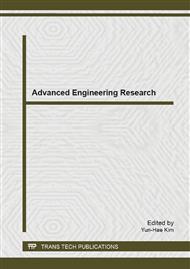p.887
p.891
p.895
p.900
p.905
p.909
p.913
p.917
p.922
Research on Wettability and Microstructure for the Petals of Nasturtium, Canna and Rose
Abstract:
This paper studied wettability of three typical petals such as nasturtium, canna and rose. Contact angle of several typical petals were measured by the contact angle measuring instrumen, which were 154.6°,151.5°and 153.4°respectively. Microstructure of the nasturtium petals, canna petals and rose petals were observed through scanning electron microscopy, It found that 3 typical petals are composite structure of micronscale and nanoscale, although their forms is different, they all have superhydrophobic function. This paper analyzed the reasons for the superhydrophobicity for different microstructures of three typical petals.
Info:
Periodical:
Pages:
905-908
Citation:
Online since:
April 2014
Authors:
Keywords:
Price:
Сopyright:
© 2014 Trans Tech Publications Ltd. All Rights Reserved
Share:
Citation:


